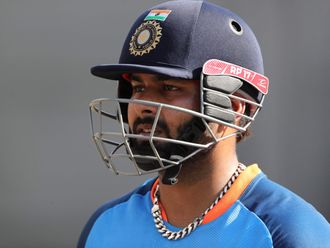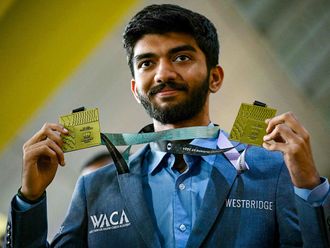
Rohit Sharma must certainly love the World Cup. Seven centuries, the most in the cricket tournament’s history, sums up his love affair with the premier One-Day International event. Five of them came in a row in England, although India failed to make the semifinals four years back.
Century No. 7 in Delhi on Saturday was far different from Sharma’s other hundreds. The 36-year-old raced off the blocks, chasing Afghanistan’s total of 272, and kept his foot on the accelerator throughout the innings.
Sharma in full flow is a beautiful sight in ODI cricket. The Arun Jaitely Stadium crowd was treated to a Rohit Sharma special as the Indian captain peppered the boundary with power, precision and elegance. The frontfoot pull and the pickup shot over midwicket were the best of a bushelful of strokes around the wicket.
How Rohit Sharma dismantled Rashid Khan
Sharma struck a 84-ball 131 as he ravaged the Afghan bowling for 16 fours and 5 sixes. It was Sharma’s night. Not even the mercurial Rashid Khan could stop the Indian captain. Sharma took the attack to the leggie, lashing 4, 4, 6, in the Khan’s fifth over, and the Afghan capitulation was complete.
Ahead of the tournament, Sharma had said at a press conference: “This is the biggest tournament of my entire career.” At 36, this must be Sharma’s last chance to win the World Cup. That must add to the pressure.
The 2023 tournament didn’t start well for him, although India made light of a rocky start to beat Australia. The duck in that match would have served as extra motivation when he came across the Afghan attack.
Sharma laid into the bowling straightaway and sprinted to his fifty on only 30 balls. The hundred came 33 balls later. The 63-ball hundred made him the fastest Indian centurion at the World Cup, overtaking Kapil Dev’s 72-ball effort in 1983.
Sharma can score quickly; he has a 35-ball century against Sri Lanka in 2017. But that was in a T20 game. This was the ODIs, a format he revels in. Remember, he’s the only batter to own three ODI double centuries. Here was a batter who has added a new dimension to his ODI game.
Sharma seems to have thought long and hard about his game, and its effect on Indian batting. He no longer seems content to play the waiting game. Four years back, he would play himself in, picking the gaps and accumulating runs before steaming away. A typical Sharma innings used to be filled with stylish strokes that relied on sheer timing as he purred to a hundred. All that changed in the recent past, ostensibly influenced by England’s aggressive approach in the 2019 World Cup, especially the impact of whirlwind starts by openers Jason Roy and Jonny Bairstow.
There was also criticism that India’s slow starts are a relic of the past. That must have prompted Sharma to harp on the need for faster scoring in the powerplay, and he has shown the way. The need for speed in scoring has introduced premeditated slogs into his game in the early phase. That sometimes has brought about his downfall, especially when spinners operate early in the innings. When it works, Sharma has been able to snatch the momentum from rival bowlers.
On Saturday, everything fell into place. Sharma sped to his record seventh World Cup ton, going past Sachin Tendulkar to become the scorer of most centuries in World Cups. Along the way, he became the joint fastest with Australia’s David Warner to score 1,000 runs (19 innings) in the tournament’s history and overtook West Indian Chris Gayle’s tally of 553 sixes in international cricket.
When Sharma was bowled by Rashid Khan, he had placed India on the road to victory. That too with a healthy run rate. Little surprise that the Kotla crowd rose its feet to applaud him.
Rohit Sharma 2.0 is here. Can he win the World Cup? A typical grin would be his answer.









